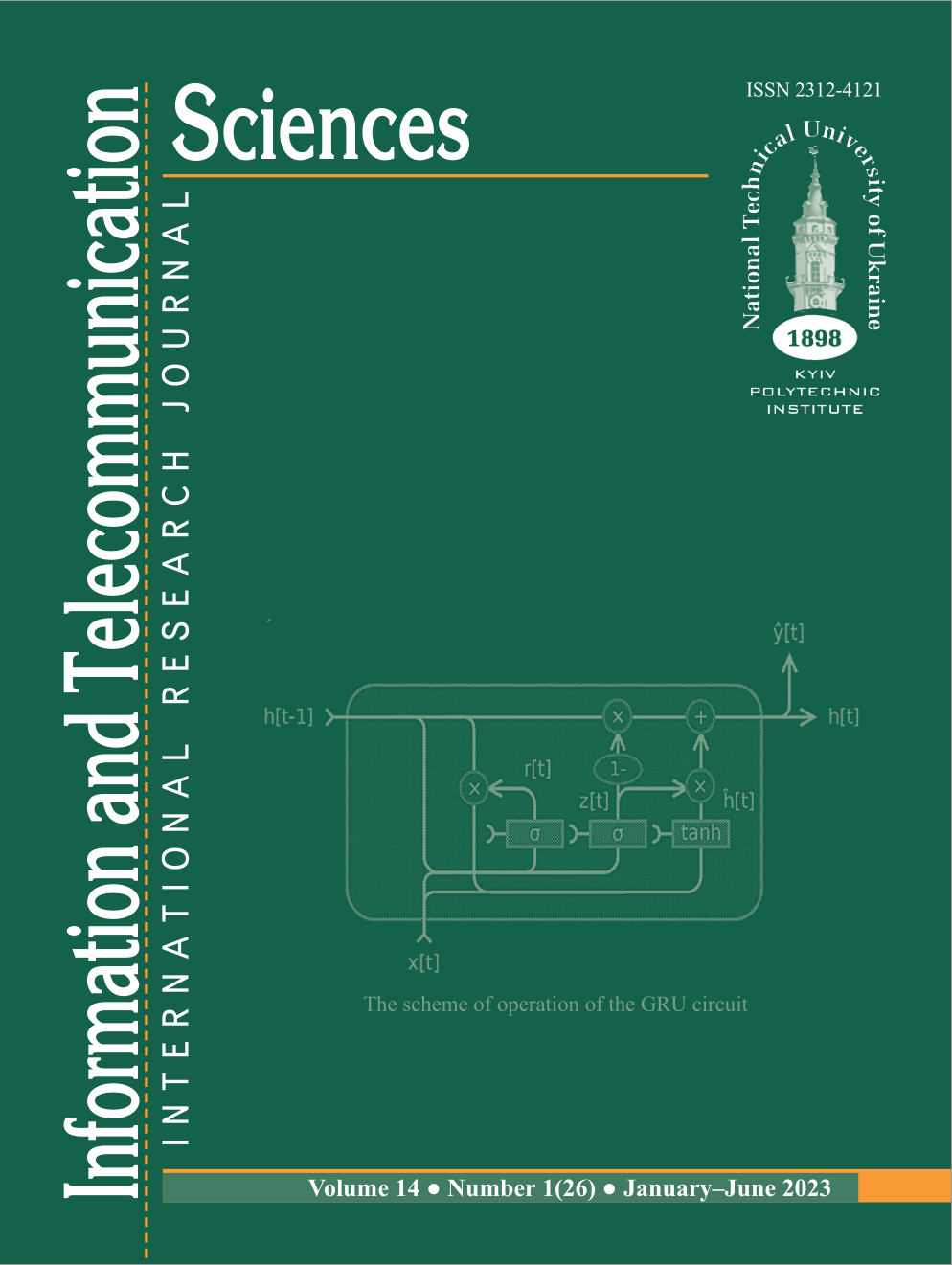THE PROGRAM FOR ASSESSING THE CONNECTIVITY OF NODES OF WIRELESS EPISODIC NETWORKS UNDER THE CONDITION OF USING UAVS
DOI:
https://doi.org/10.20535/2411-2976.12023.24-34Keywords:
wireless episodic network, unmanned aerial vehicle, connectivity of nodesAbstract
Background. Based on analytical mathematical models, the duration of connectivity of mobile subscribers (nodes) (MS) of a wireless episodic network (WEN, consisting of MS and UAV) was investigated in conditions of direct radio visibility and considering the relaying.
Objective. The purpose of the work is to find methodological approaches to ensure the connectivity of WSN nodes, which is a necessary condition for obtaining information from WSN in the absence of communication infrastructure.Methods. Simulation modelling based on MAPLE 14 software package and analytical calculation methods are used.
Results. It is shown that the duration of connectivity is directly proportional to the size of the coverage area and inversely proportional to the movement speed of nodes. The mobility nature (scenario) of nodes also affects the duration of connectivity. The simulation of the nodes' movement was carried out under 4 scenarios: "march", "incoherent", "random wandering in the field" and "random wandering in the city". The largest values of the connectivity duration correspond to the third scenario, and the smallest - to the second (with a fixed radius of the coverage area and the movement speed of nodes). Thus, the average connectivity duration of the UAV-pedestrian connection in the event of an "incoherent" will be about 36 minutes, and the UAV-car connection - about 5 minutes.
Conclusions. The system and functional parameters of the networks, which were obtained as a result of the research, will form the basis of the initial data and limitations of the mathematical model, and will also make it possible to determine the initial placement of the UAV network at the planning stage.
References
O. Lysenko, S. Valuiskyi, P. Kirchu, and A. Romaniuk, “Optimal control of Telecommunication Aeroplatform in the area of emergency”, Information and Telecommunication Sciences, no. 1, pp. 14–20, 2013.
S. Valuiskyi, A. Lysenko, T. Pryshchepa, and S. Chumachenko, “The problem of finding a rational topology of wireless sensor networks using UAVs”, 2015 Second International Scientific-Practical Conference Problems of Infocommunications Science and Technology (PIC S&T), 2015.
O. Lysenko, V. Romaniuk, O. Tachinina, and S. Valuiskyi, “The problems of control in wireless sensor and mobile ad-hoc networks”, Integrated Computer Technologies in Mechanical Engineering, pp. 385–402, 2020.
M. Zhu, F. Liu, Z. Cai, and M. Xu, “Maintaining connectivity of Manets through multiple unmanned aerial vehicles”, Mathematical Problems in Engineering, vol. 2015, pp. 1–14, 2015.
S. Bunin and A. Voiter, Computer networks with packet radio communication. K.: Tehnika, 1989.
L. Kleinrock, Queuing Theory. M.: Mashinostroenie, 1979.
L. Kleinrock and F. Tobagi, “Packet switching in radio channels: Part I--carrier sense multiple-access modes and their throughput-delay characteristics”, IEEE Transactions on Communications, vol. 23, no. 12, pp. 1400–1416, 1975.
M. Ilchenko, S. Bunin, and A. Vojter, Packet-switched cellular radio networks. K.: Naukova dumka, 2003.
L. Kleinrock, Computing networks with queues. M: Mir, 1979.
Downloads
Published
How to Cite
Issue
Section
License
Copyright (c) 2023 Ihor Sushin, Olexandr Lysenko, Stanislav Valuiskyi

This work is licensed under a Creative Commons Attribution 4.0 International License.
The ownership of copyright remains with the Authors.
Authors may use their own material in other publications provided that the Journal is acknowledged as the original place of publication and National Technical University of Ukraine “Igor Sikorsky Kyiv Polytechnic Institute” as the Publisher.
ITS articles are published under Creative Commons licence:
- Authors retain copyright and grant the journal right of first publication with the work simultaneously licensed under CC BY 4.0that allows others to share the work with an acknowledgement of the work's authorship and initial publication in this journal.
- Authors are able to enter into separate, additional contractual arrangements for the non-exclusive distribution of the journal's published version of the work (e.g., post it to an institutional repository or publish it in a book), with an acknowledgement of its initial publication in this journal.
- Authors are permitted and encouraged to post their work online (e.g., in institutional repositories or on their website) prior to and during the submission process, as it can lead to productive exchanges, as well as earlier and greater citation of published work.

